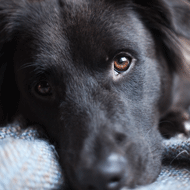Hampshire vets to offer novel liver shunt procedure

'The novel aspects of this technique lead to relatively low complication with high success rates' - SCVS.
A novel canine liver shunt procedure is being made available in the UK for the first time.
The technique - a minimally invasive, interventional closure of intrahepatic portosystemic shunts - is being offered by the cardiovascular interventional service at Southern Counties Veterinary Specialists (SCVS), Hampshire.
SCVS gained access to the technique after working with the University of Giessen, Germany, where the technique was pioneered by one of the most experienced veterinary interventionists in mainland Europe.
Writing on its website, SCVS notes that the technique ‘avoids the need for stent placement within the caudal vena cava and closes the shunt at a different level compared to the stent and coil technique.’
It adds that this ‘avoids the risk of development of collateral veto-venous shunts’ - something that has reportedly occurred in the stent and coil embolisation method.
The procedure involves approaching the hepatic vasculature through an access catheter inserted within the jugular vein. A large, single coil is then positioned within the shunt vessel with portal pressures and blood flow checked before, during and after placement.
SCVS writes that this allows for the controlled closure of the shunt vessels, avoiding the risk of severe portal hypertension and allowing gradual complete shunt closure in most patients.
‘Complete shunt closure is important for a good longtime outcome,’ SCVS notes. ‘The novel aspects of this technique lead to relatively low complication with high success rates.’



 The RCVS has announced a new version of its 1CPD mobile app, with enhanced features for veterinary surgeons and veterinary nurses to record their continuing professional development.
The RCVS has announced a new version of its 1CPD mobile app, with enhanced features for veterinary surgeons and veterinary nurses to record their continuing professional development.